Basil Oil
on Jul 05, 2024, Updated Jun 25, 2025
This post may contain affiliate links. Please read our disclosure policy.
This emerald green oil adds beautiful color and summery flavor to all kinds of dishes. Drizzle basil oil over everything from tomatoes to fish, or use as a dip for bread.
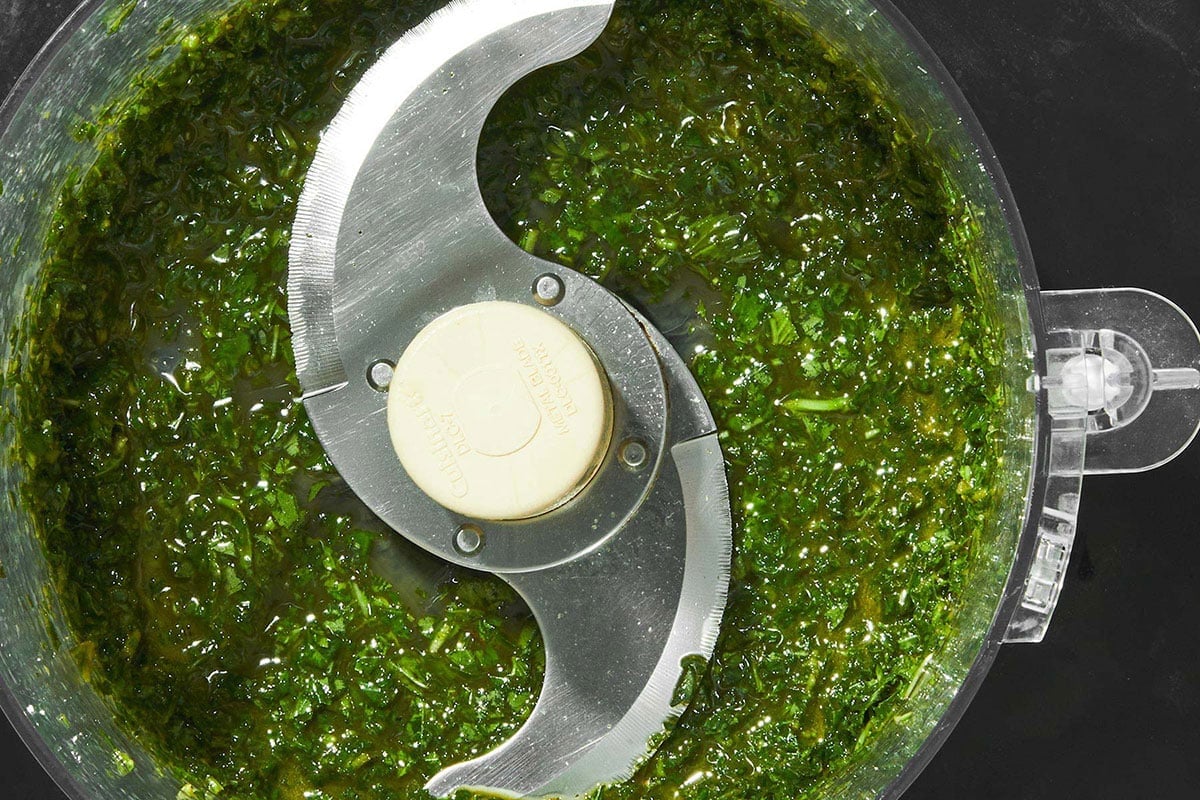
I have been making basil oil for about 30 years, and it’s one of my very favorite condiments to have on hand. Three ingredients — fresh basil, extra-virgin olive oil, and salt — add up to one of the most versatile “finishing touch” ingredients. The luminous green liquid adds interest and polish to so many summer dishes, from a plate of sliced tomatoes to a crostini with roasted red peppers. Drizzle it over some roasted vegetables. Or a quesadilla.
This is the perfect way to use up a surplus of fresh basil from your garden or when it’s plentiful at the farmers market in mid-summer. Think of this basil oil recipe whenever extra basil finds its way into your world!
By signing up, you agree to our Privacy Policy.
What's In This Post?

Basil Oil: This emerald green oil adds beautiful color and summery flavor to all kinds of dishes. Drizzle over everything from tomatoes to fish, or use as a dip for bread.
How to Use Basil Oil
I started using basil oil regularly in my cooking decades ago when I worked on a cookbook called French Food American Accent by the extremely talented chef and restaurateur Debra Ponzek. I realized immediately that this emerald oil was going to be a crucial part of my summer cooking, It’s like a simplified pesto, without the garlic or cheese, and if you have it on hand you can sub it in pretty much anywhere basil pesto is called for.
There are so many ways to put your herbal oil to use! It adds a fresh summery herbal note to so many dishes. Try:
- Use it as a dip for crusty bread; ciabatta is a favorite.
- Drizzle over sliced tomatoes, roasted tomatoes, grilled vegetables, or grilled vegetable kabobs.
- Add some to a dressing or vinaigrette for salads and vegetable dishes.
- Drizzle over grilled steak, fish, seafood, or chicken.
- Brush it on bread to make bruschetta or crotstini.
- Stir some into mayonnaise or aioli.
- Toss with roasted baby potatoes
- Stir some into rice, couscous, or pasta.
Ingredients for Basil Oil

- Fresh basil leaves – Be sure to wash and then dry the leaves before adding them to the food processor.
- Extra-virgin olive oil – Use the best you have!
- Kosher salt
- Freshly ground black pepper – This is optional, but if you like a peppery oil, add it to taste.
The Ratio of Fresh Basil to Olive Oil in Basil Oil
This is very much up to you! The basil flavor of the oil will be stronger the more basil you add, so it’s a decision about the thickness or viscosity you are looking for.
I like to use about 1/2 cup of olive oil to 1 cup of basil leaves. This makes a pretty thick oil with more of a pesto consistency. If you want a thinner oil, add more olive oil, or include a smaller amount of basil leaves. Also, know that if you choose to strain out the leaves at the end, the oil will be fairly clear and much thinner without the minced leaves still blended in.
How to Make Basil Oil
- Combine the ingredients: In a food processor, add the basil, olive oil, salt, and pepper, if desired.
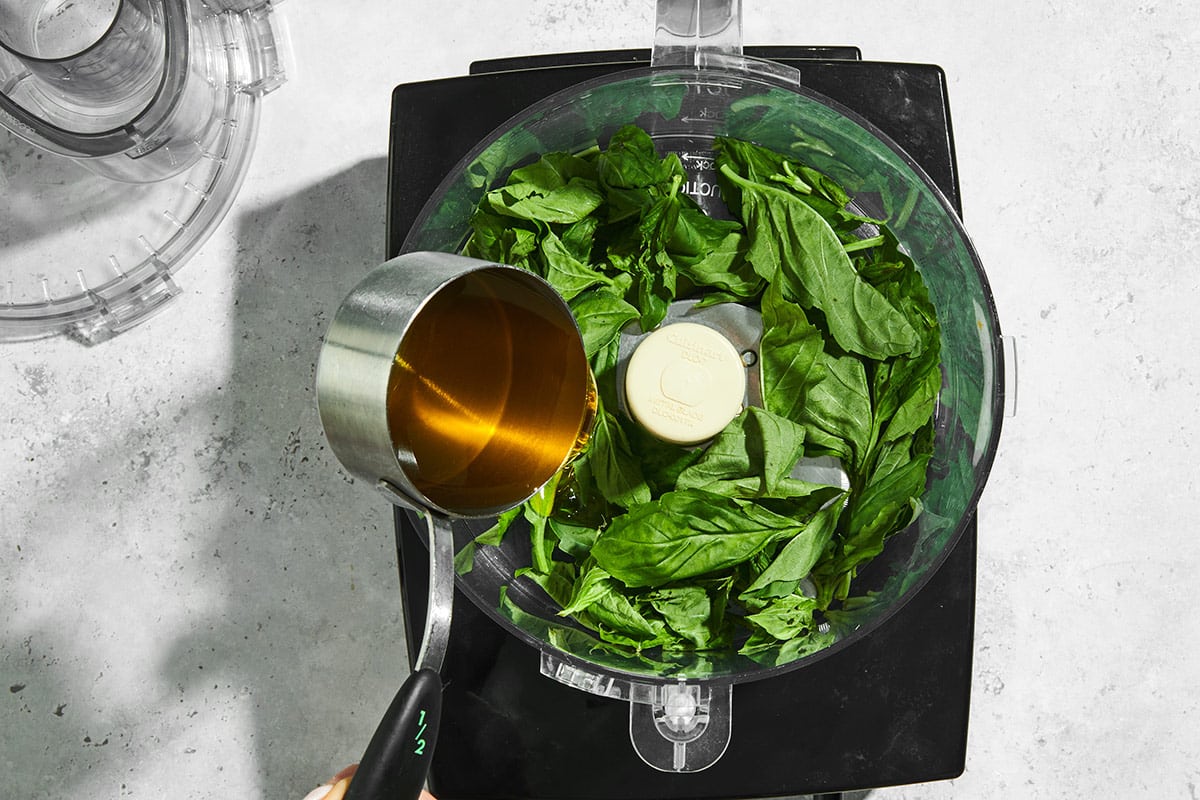
- Blend: Puree until well blended Scrape down the sides as needed, and puree again until it is consistent and fairly smooth. Add more oil if needed to reach the desired consistency. Add more salt and/or pepper if needed. Straining is not necessary, but if you want a clearer oil, you can strain out the solids.
- Store: Transfer to a container, refrigerate for up to a week, and use as desired.
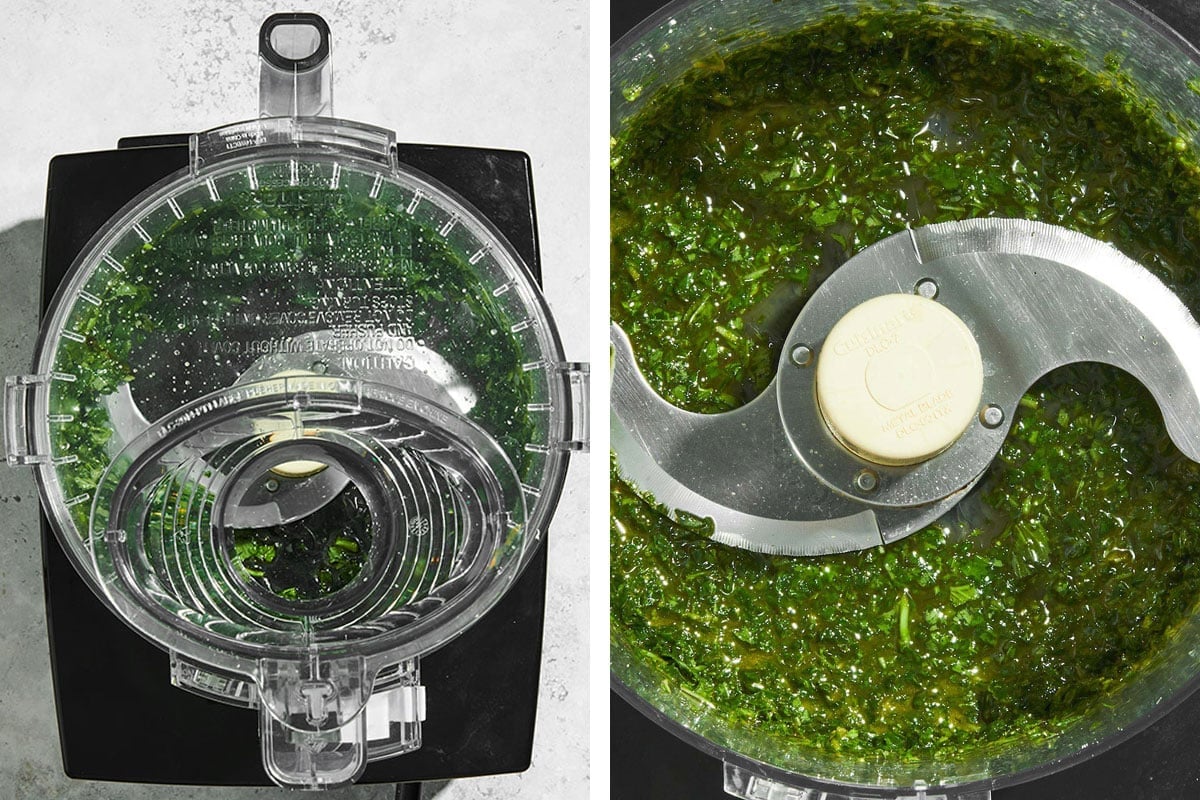
Kitchen Smarts
If you don’t have a food processor or blender, just mince the basil very finely and shake it with the oil and salt in a small container. It won’t get you to the full level of basil oil flavor or color, but it will still be delicious.

Tips
- If the basil is sandy or dirty, make sure to rinse and dry it well before picking off the stems to make this basil oil.
- You can use a food processor or a blender to make basil oil. Pureeing the basil with the oil in a machine is best compared to making it by hand because the blades process the herbs very finely, releasing more of the herbal essences.
- Use a more delicately flavored olive oil, which will allow the flavor of the herbs to shine.
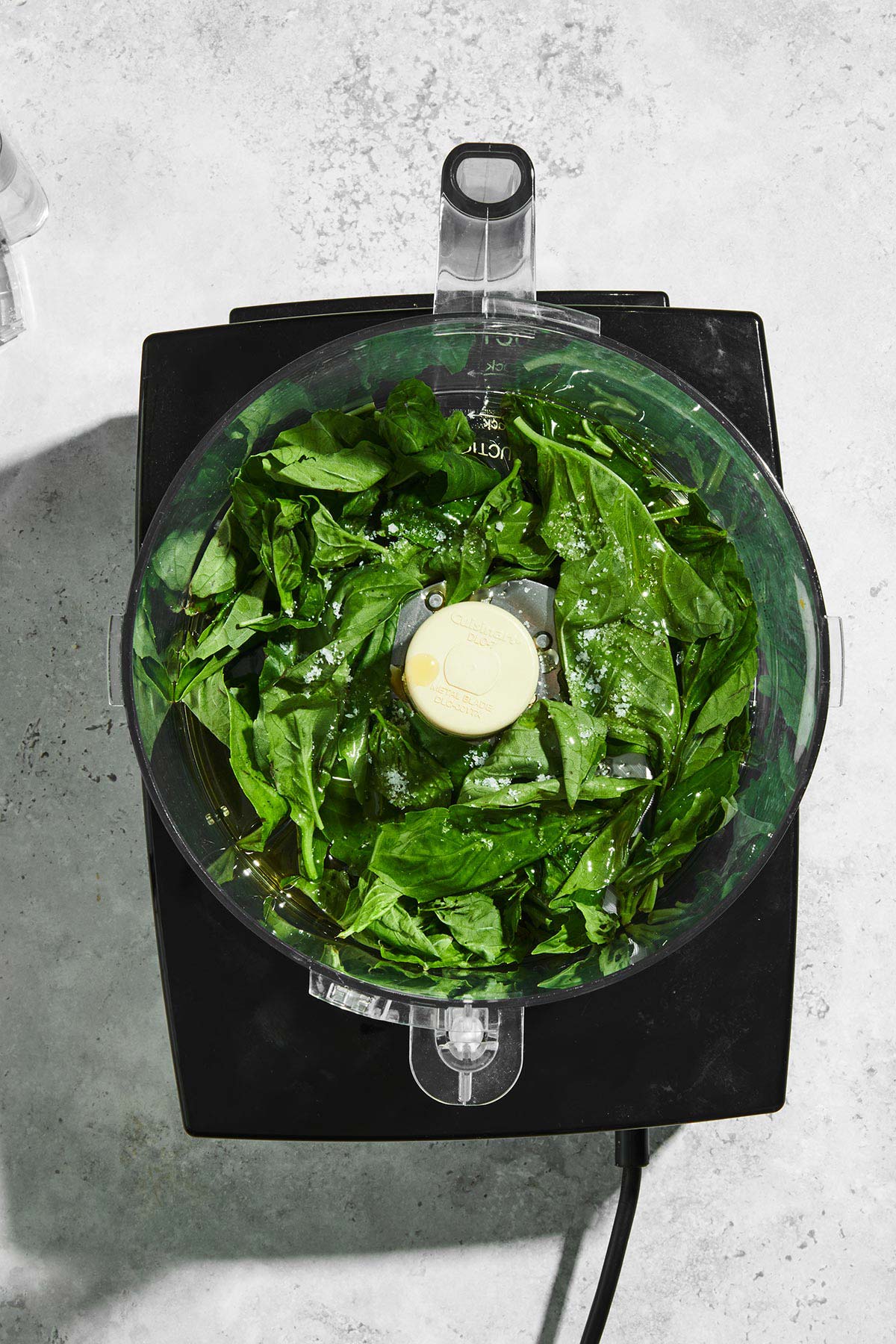
How to Store Homemade Basil Oil
Basil oil will keep in the fridge for up to 1 week. Do not store it at room temperature, as it will start to spoil or brown quickly.
Freezing Basil Oil
You can also freeze this in tiny containers or even a freezer-proof zipper-top bag. Flatten out the bag once you’ve added the basil oil, then freeze flat. Break off pieces of the frozen oil as you need them. It will defrost very quickly, and if you are adding it to a hot dish as a finishing touch, such as soup, you don’t even have to defrost it.
You can also freeze basil oil in ice cube trays. Once frozen, transfer the cubes to a freezer-proof zipper-top bag, seal, and freeze. Basil oil will keep in the freezer for up to 6 months.
FAQs
You don’t have to blanch herbs before turning them into oil. The flavor will still be vibrant and clean, though blanching does help lock in the bright green color. I don’t have the patience for this most of the time, however.
Blanching the leaves means that you then have to pat them completely dry before blending them with the oil. Otherwise, the water will cause the color of the oil to dull as the pureed leaves will brown faster.
Again, this is optional. I usually do not strain the oil. I like to keep the finely pureed basil leaves in the oil, which I think adds even more flavor. Straining out the herbs also reduces the volume of oil significantly. However, if you want a clear oil with a more translucent green presence, you will want to strain out the herbs.
Either option is fine, depending on how you are planning to use the oil and what you want for a visual aesthetic.
Since there is a risk of bacteria forming, even if it’s refrigerated, you should not keep basil oil for more than a week. It’s better to make this in small batches and make it often.
What to Serve Basil Oil On
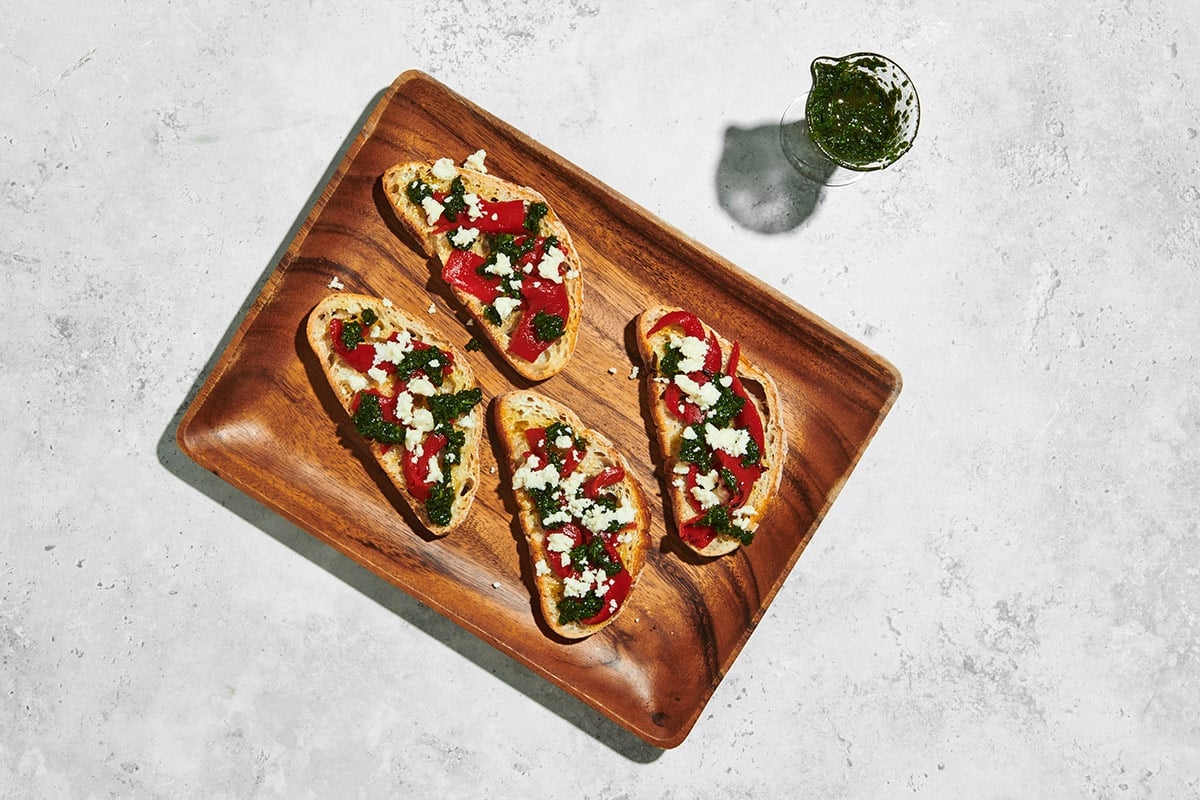
More Basil Recipes
- Tomatoes with Mint Basil Pesto
- Tomato, Mozzarella, and Basil Salad
- Roasted Potatoes with Arugula-Basil Dipping Sauce
- Shrimp and Corn Salad with Basil Dressing
- Basil Ginger Lemon Saketini
Pin this now to find it later
Pin It
Basil Oil
Ingredients
- 1 cup fresh basil leaves (washed and dried)
- ½ cup extra-virgin olive oil (or more as desired)
- 2 teaspoons kosher salt (or to taste)
- Freshly ground black pepper to taste (optional)
Instructions
- In a food processor, puree the basil with 1/2 cup of olive oil, salt and pepper, if desired, until well blended. Scrape down the sides as needed, and puree again until it is consistent and fairly smooth. Add more oil if needed to reach the desired consistency. Add more salt and/or pepper if needed.
- Strain out the solids if you wish, for a clearer oil, but leave them in if you don't mind a more textured, full-flavored oil. Transfer to a well-sealed container and refrigerate for up to 1 week.
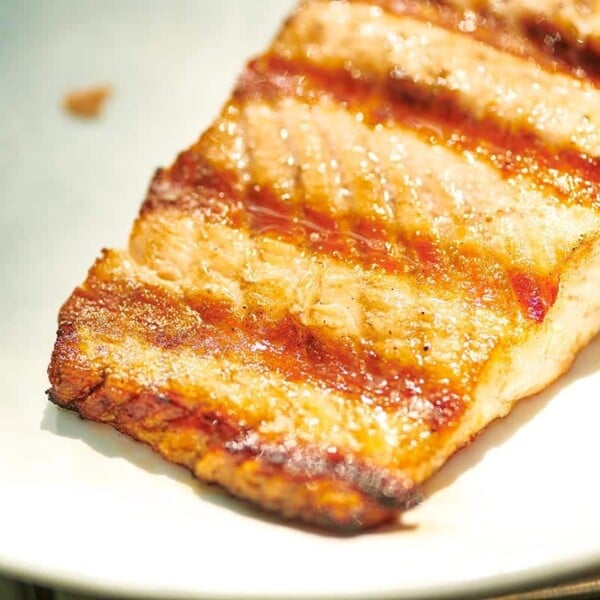
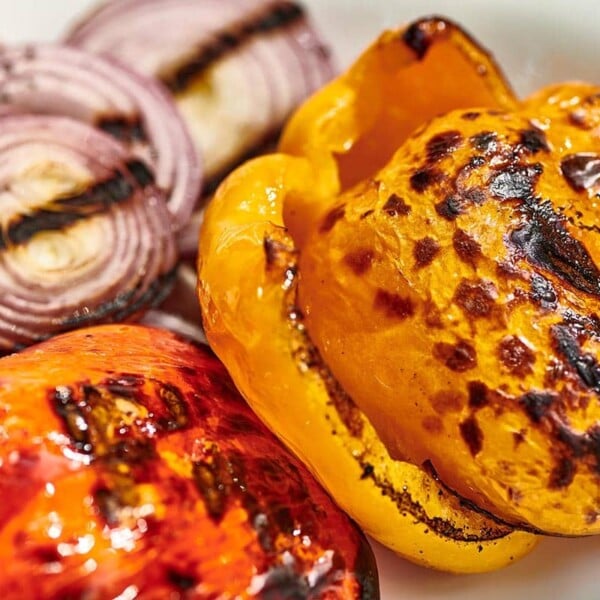

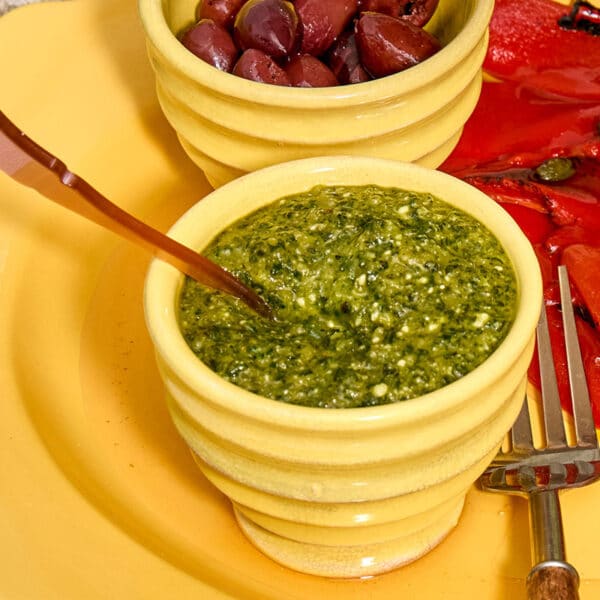
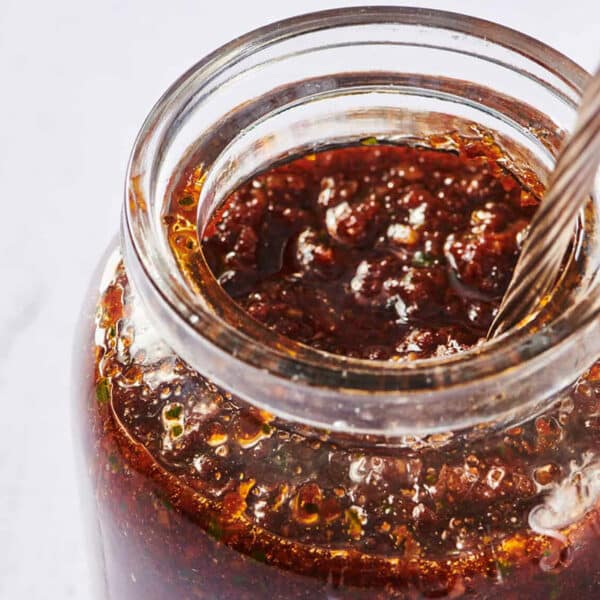

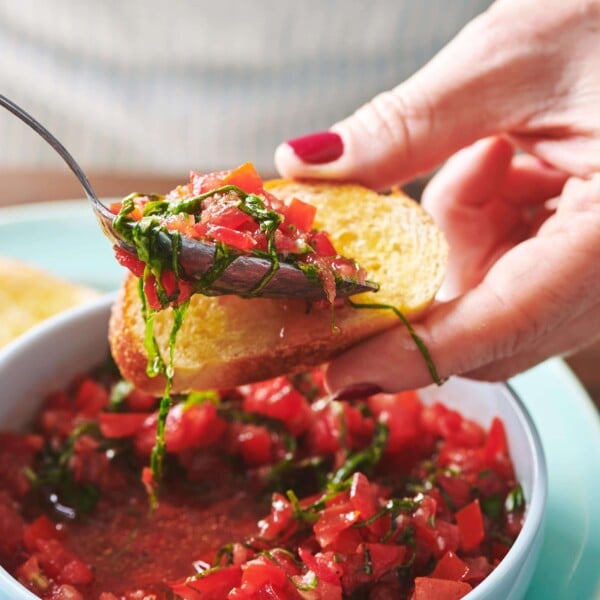









Basil is a staple in my garden, and this oil is a great way to put it to use!